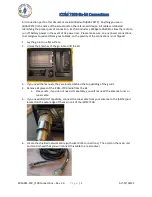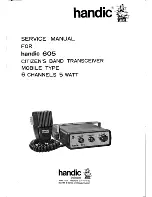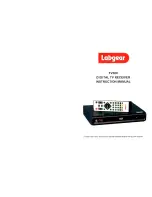
Page 49
FT
DX
9000D O
PERATION
M
ANUAL
C
ONVENIENT
F
EATURES
The FT
DX
9000D includes a unique capability among HF
transceivers: the ability to operate in a full duplex envi-
ronment, where by you can transmit on the Main (VFO-
A) band while simultaneously tuning around, on a differ-
ent band, on the Sub (VFO-B) band. This affords the con-
test operator extra tuning time in search of new contacts
and multipliers while calling CQ on the “run” band. This
yields “SO2R” (Single Operator, Two Radio) operating
capability while using only one transceiver!
To engage Full Duplex crossband operation, set Menu item
“TX GNRL 158 FULL DUP” to “DUP” instead of the
default “SIMP” selection. To return to normal (non-du-
plex) operation, return Menu to SIMP.
When Full duplex operation is engaged, you may receive
on the Sub (VFO-B) band frequency while transmitting,
during dual receive operation, on a different band on the
Main (VFO-A) band. This allows you to tune for contacts
on 15 meters, for example, while calling CQ on 20 meters
during a slow time in a contest. Press the Sub (VFO-B)
band TX Button/LED (#
) to switch transmit control
to that VFO to call a station, then press the Main (VFO-A)
band TX Button/LED (#
) to return to the “run” band
and continue your “CQ” process.
This capability within a single transceiver is a unique fea-
ture of the FT
DX
9000D. It relieves you of the need to run
separate key, PTT, and other control lines to two different
radios from your logging computer.
Note
Full Duplex operation within the same band (e.g. both Main
and Sub VFOs on 20 meters) is not possible.
Important Guidelines for Full Duplex Operation
Remember that, at your station location, the capability
exists for damaging RF voltage to be conducted from your
transmitting antenna into your receiving antenna during
full duplex operation. The exact amplitude will depend on
the operating frequency, proximity and polarization align-
ment of the antennas, and the transmitting power level (in-
cluding your linear amplifier, if used).
Accordingly, you should take some time, in assembling
your station, to ensure that proper isolation exists between
your station antenna systems. One way to do this is to con-
nect the “receive” antenna coaxial cable to the “Transmit-
ter” jack of low-power Wattmeter, and connect the “An-
tenna” jack of the Wattmeter to a 50-Ohm Dummy load.
Now transmit on the “TX” antenna you will be using, and
observe the deflection (if any) on the low-power Wattme-
ter connected to the “receive” antenna. For safe operation
of the FT
DX
9000D, you should observe “10 mW” or less
on the Wattmeter.
D
UAL
R
ECEIVE
: F
ULL
D
UPLEX
O
PERATION
Summary of Contents for FTDX-9000D
Page 1: ...FTDX9000D Operation Manual...
Page 2: ......
Page 95: ...Page 93 FT DX 9000D OPERATION MANUAL NOTE...
Page 101: ...Page 99 FT DX 9000D OPERATION MANUAL NOTE...
Page 127: ...Page 125 FT DX 9000D OPERATION MANUAL NOTE...
Page 149: ...Page 147 FTDX9000D OPERATION MANUAL NOTE...
Page 152: ...Page 150 FTDX9000D OPERATION MANUAL NOTE...
Page 153: ...Page 151 FTDX9000D OPERATION MANUAL NOTE...
















































